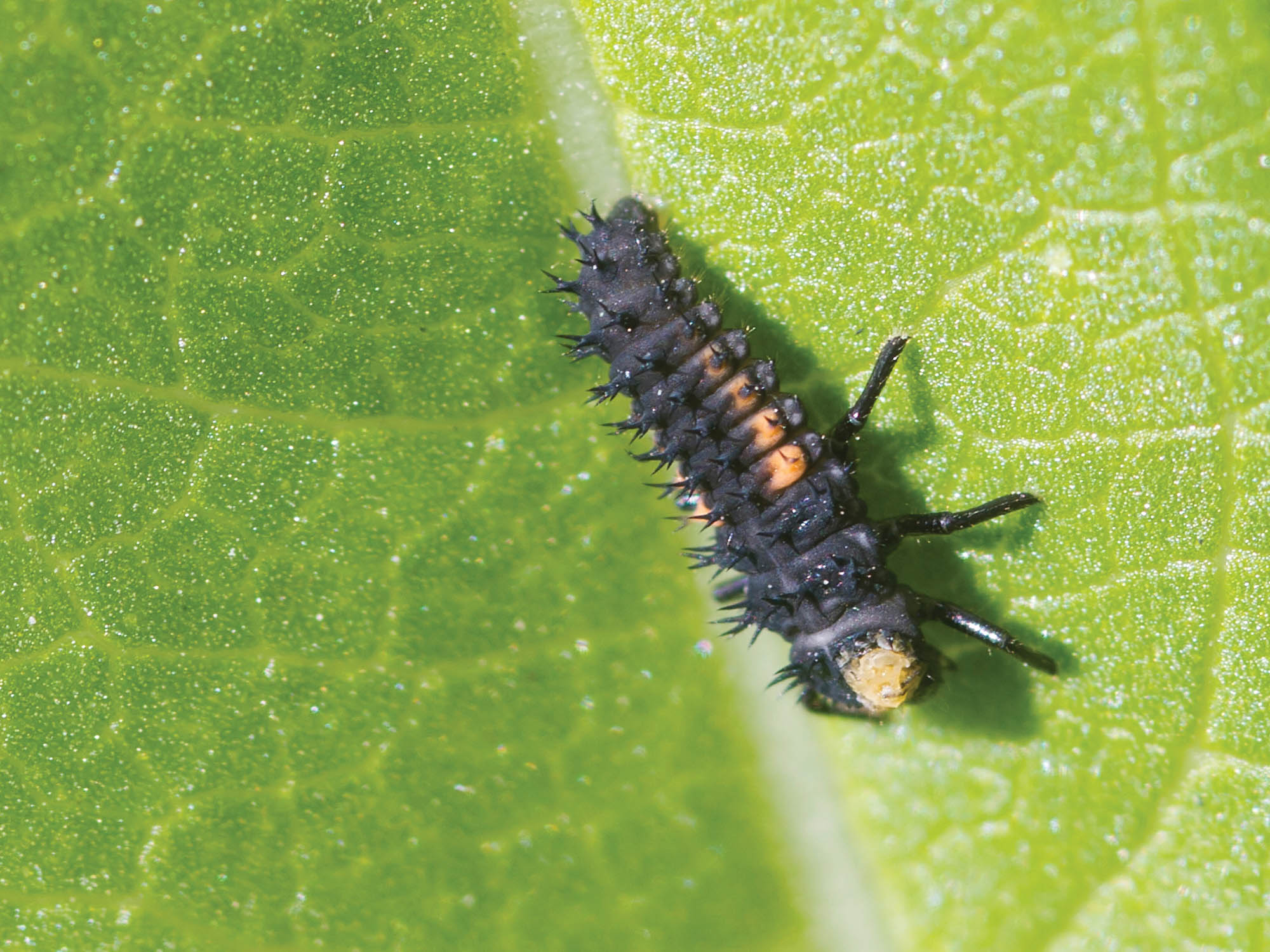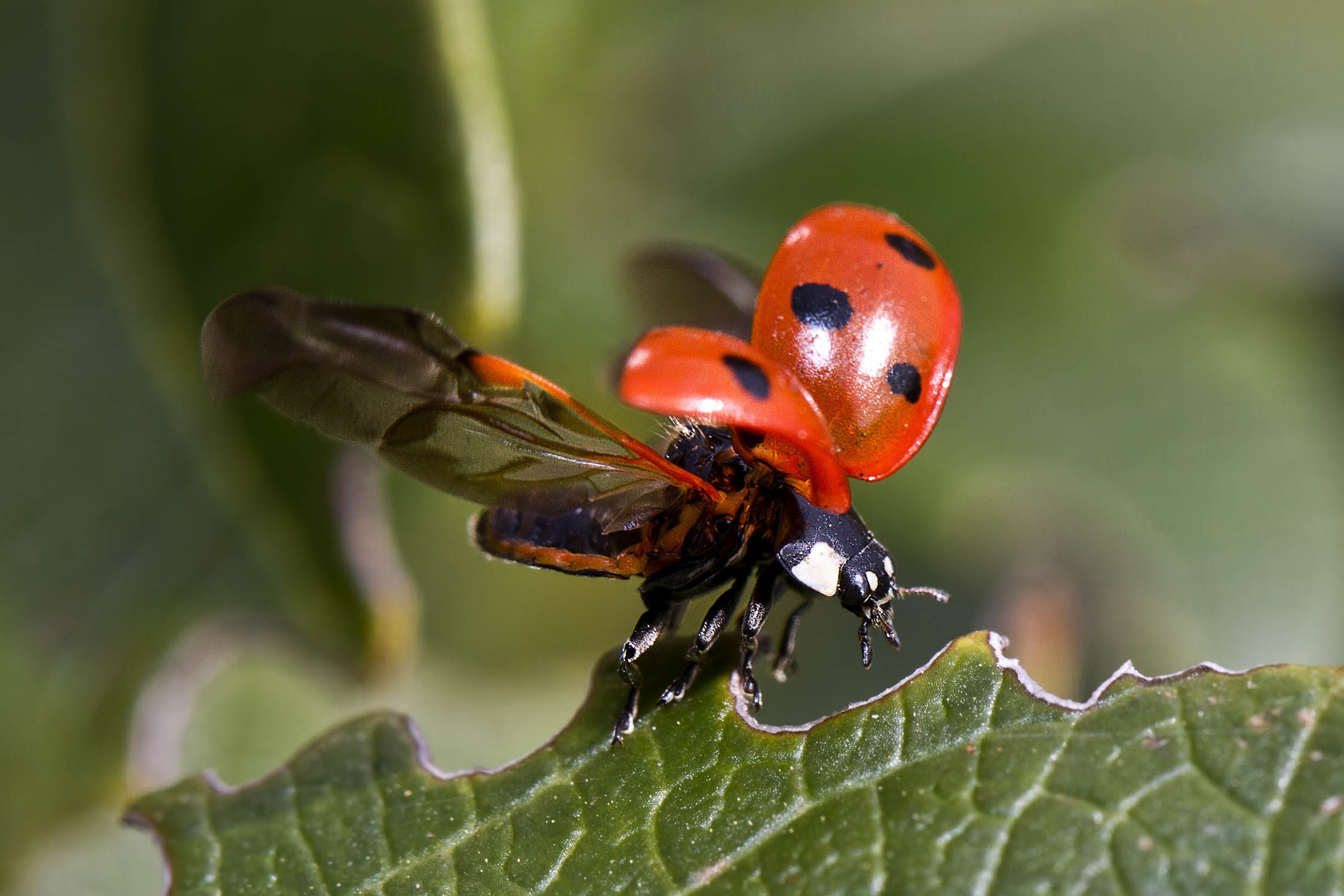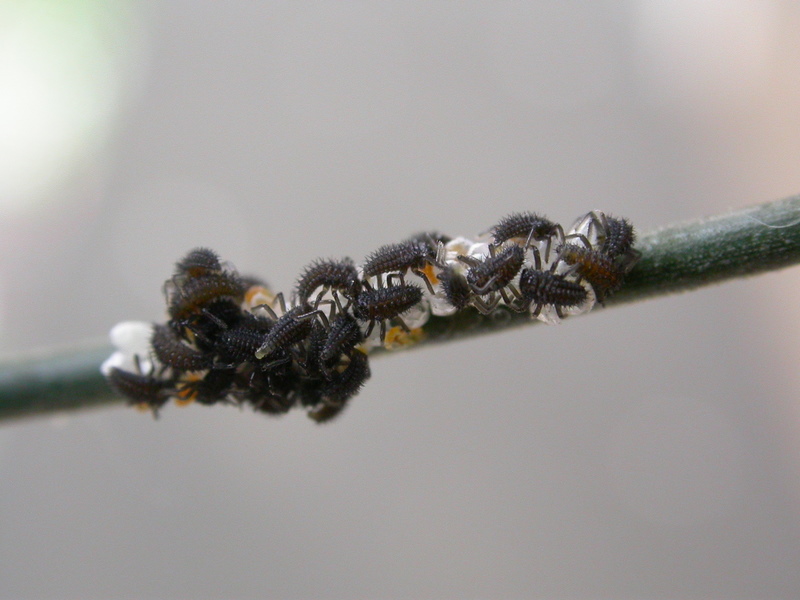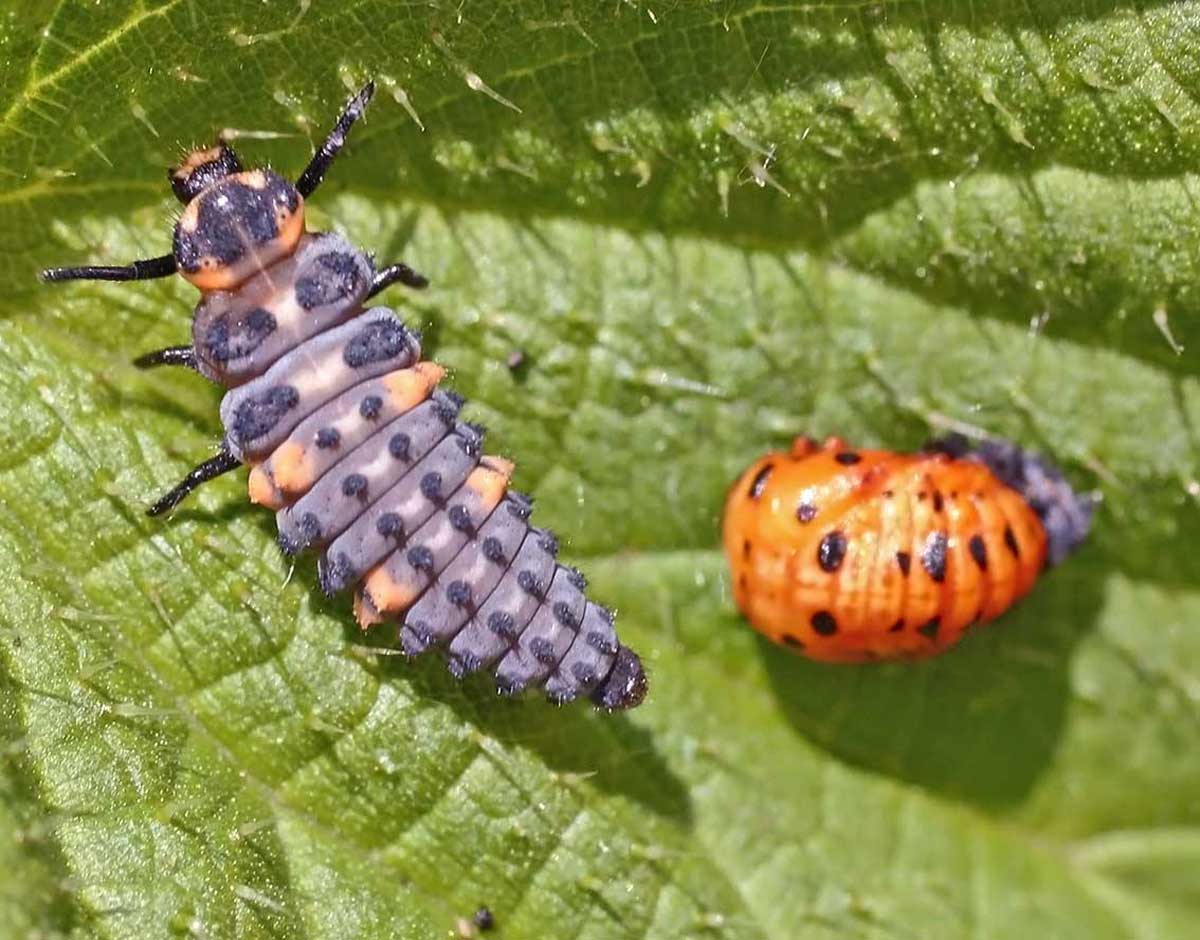
Ladybug
Beneficial
Did you know that ladybug larvae (baby ladybugs) look like teeny black alligators? Now you do! Lady beetles (ladybugs) are well known predatory insects that ought to be encouraged in our gardens. They are 100% carnivorous and while they feed chiefly on aphids, they will also eat scale insects and other soft-bodied creatures but to a lesser degree. While most of us recognize the adult form with its
Birds tend to leave ladybugs alone since red and black are warning
Ladybugs are highly sensitive to pesticides and will not fare well in gardens where they are used. You can actually purchase ladybugs, but we only recommend purchasing ladybugs for indoor greenhouse pest control.
Outdoors, it is better to try and create conditions that suit them. More on this below. If you do choose to buy a bag full of them and have them sent to you by mail, be sure that the ladybugs you are purchasing are actually native to your area. Ladybugs are best released early in the morning or late in the evening, and most of them will not care that there might be a few aphids in your garden. Ladybugs want there to be thousands of aphids, as they are looking to start families and want to be sure of a food source. A caragana shelterbelt teeming with aphids is appealing to a ladybug; one infected lupine in your garden is not. Because of this, releasing ladybugs outdoors if you don't have a serious aphid problem often leads to your purchased ladybugs flying off to somewhere that does.
While aphids are their


How do you encourage ladybugs to live in your yard?
Ladybugs hibernate, most often in leaf litter. Gardeners should not be too quick with a rake in the fall, and unless you absolutely can’t bear it, leave the foliage where it falls and deal with it (or not) in the spring. Gardens where leaf litter is left in place until spring planting time have much better ladybug populations than those who do not. If you want to keep your ladybug populations high, you must avoid pesticides, even organic pesticides, and you need to start mulching with a shredded bark or leaf based mulch. We have lots of mulching information on our site under the Soil section, but this article is a great place to start. We recommend that people who are gardening to attract beneficial insects will choose to mulch with a shredded bark mulch and remove fallen leaves from their flower beds in the spring. We recommend leaving these fallen leaves in place underneath low shrubs, where no one really wants to rake anyhow.
Instead of mulching with a shredded bark, you can also mulch with shredded leaves. Leaf mould is gardener's gold in terms of compost and ladybug value, but it does tend to pack so we do recommend shredding your leaves before applying them. To shred leaves with ease you can either:
- Run fallen leaves over with your lawnmower, bag on, to bag them rather effortlessly; or
- Fill a metal garbage bin about half full of collected leaves. Put on safety goggles at least, but ideally a full face mask. Use your weed whacker like an immersion blender. You do this by sticking your weed whacker into the bin half full of leaves and turning it on and off in pulses until the leaves are suitably shredded. You may also want to stir in some dried grass clippings or shredded bark by hand as well but this is optional.
For more information on how to apply mulch, check out our Mulch and More guide!



